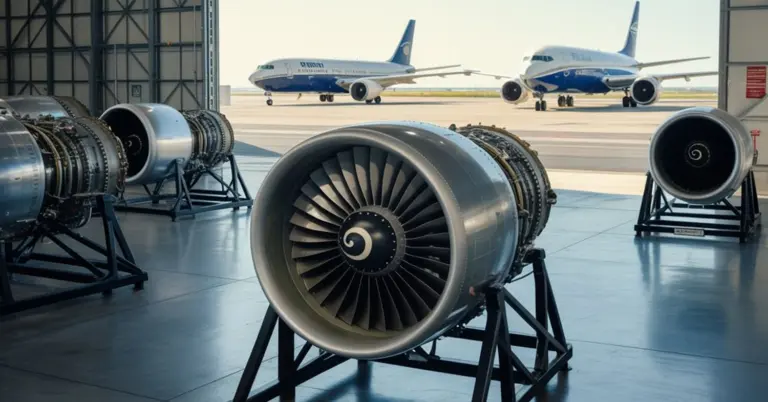Understanding Frictional Unemployment: Examples and Insights
Frictional Unemployment – Definition and Overview
Frictional unemployment represents the temporary, largely voluntary joblessness that emerges as workers navigate transitions between positions. Commonly called ‘search unemployment,’ it arises from the natural ebb and flow of labor as individuals pursue superior opportunities. This transitional period is a normal feature of a healthy, dynamic economy—persisting even when full employment is achieved.
Examples of Frictional Unemployment in Real Life
Common examples of frictional unemployment include:
-
Recent Graduates: Individuals searching for their first professional role after completing their education.
-
Career Changers: Professionals voluntarily leaving jobs to pursue opportunities in a different industry.
-
Relocating Individuals: People who move to a new city or region and must find new employment.
-
Seasonal Workers: Employees in industries like tourism or agriculture who are between assignments.
-
Self-Employed Individuals: Freelancers or contractors searching for their next project or contract.
-
Workforce Re-entrants: People returning to the labor market after an extended absence (e.g., for caregiving).
-
Retirees Seeking Part-Time Work: Retirees who decide to re-enter the workforce on a part-time basis.
Impact of the Great Resignation on Frictional Unemployment
The Great Resignation—a phenomenon that surged during and after the COVID-19 pandemic—has significantly changed frictional unemployment patterns worldwide. This widespread movement saw millions of workers voluntarily leaving their jobs, seeking better opportunities, superior work-life balance, and improved working conditions.
Job search periods lengthened considerably as workers grew increasingly selective about their next career moves, increasing frictional unemployment rates across industries.
The Great Resignation highlighted how job dissatisfaction and evolving career aspirations drive frictional unemployment. Workers now show greater willingness to endure temporary unemployment periods, prioritizing positions that genuinely align with their evolving values and aspirations. This shift has pushed employers to rethink their retention and recruitment strategies, creating a more dynamic labor market where workers actively seek better job matches rather than simply taking whatever jobs are available.
Causes of Frictional Unemployment
Several key factors drive frictional unemployment:
-
Job Dissatisfaction: Workers leave jobs due to inadequate compensation, toxic work environments, or stagnant career prospects.
-
Career Evolution: Professionals often experience temporary unemployment while pursuing advanced education, specialized training, or pivoting to entirely new industries.
-
Life Transitions: Geographic relocations, family obligations, and personal circumstances frequently necessitate leaving positions before securing replacements.
-
Market Inefficiencies: The natural delay between jobseekers discovering suitable opportunities and employers identifying qualified candidates creates natural friction.
-
Financial Safety Nets: Unemployment benefits can provide the financial stability for workers to conduct a more thorough job search for a better-fitting role.
Frictional Unemployment vs. Other Types of Unemployment
| Unemployment Type | Primary Cause | Typical Duration | Key Characteristics |
|—|—|—|—|
| Frictional | Voluntary job transitions and job searching. | Short-term | A natural feature of a healthy economy; occurs even at full employment. |
| Structural | Mismatch between workers’ skills and available jobs due to economic shifts. | Long-term | Often requires retraining or education to resolve. |
| Cyclical | Decreased economic demand during recessions. | Varies with the business cycle | Rises during downturns and falls during expansions. |
| Seasonal | Predictable, annual fluctuations in specific industries (e.g., tourism, agriculture). | Short-term, recurring | Follows a predictable, seasonal pattern. |
Government Policies to Mitigate Frictional Unemployment
Governments have several policy tools to reduce excessive frictional unemployment:
-
Enhancing Information Systems: Investments in better job databases, professional career counseling, and advanced matching platforms speed up employer-candidate connections.
-
Optimizing Benefit Structures: Carefully calibrated unemployment benefits provide essential financial support while maintaining strong work incentives.
-
Enforcing Anti-Discrimination Laws: Removing artificial barriers in hiring to ensure a fair process for all demographic groups.
-
Promoting Job Flexibility: Encouraging remote work and flexible schedules to make positions more attractive and accessible.
-
Supporting Education and Training: Sponsoring programs and apprenticeships that align worker skills with market demand.
-
Encouraging Entrepreneurship: Providing alternative pathways for those transitioning between traditional jobs.
The Beveridge Curve and Its Relation to Frictional Unemployment
The Beveridge Curve is an important analytical tool for understanding labor market efficiency and frictional unemployment dynamics. This downward-sloping curve shows the relationship between unemployment rates and job vacancy rates within an economy.
Movements along the curve typically mirror fluctuations in labor supply or demand dynamics. Economic expansions drive both metrics downward as hiring accelerates, while contractions push them upward as recruitment stagnates. However, shifts in the entire curve—particularly outward movements—often indicate increased labor market frictions, including those contributing to frictional unemployment.
When the entire curve shifts outward, it signals diminished labor market efficiency—higher unemployment rates now correspond to any given level of job vacancies.
This analytical framework enables economists to differentiate between unemployment categories while assessing policy effectiveness. Inward shifts, for example, indicate successful friction-reducing interventions.
Conclusion: The Importance of Understanding Frictional Unemployment
Understanding frictional unemployment provides valuable insights into labor market vitality and broader economic health. Unlike other unemployment forms that herald economic distress, moderate frictional unemployment indicates a thriving economy where workers possess sufficient confidence to abandon current positions while pursuing superior opportunities. This voluntary movement of workers toward more productive and satisfying jobs improves overall economic efficiency and worker well-being.
Beyond its economic indicators, frictional unemployment serves as a catalyst for professional growth and skill enhancement. During these transitional periods, professionals frequently develop new skills, cultivate valuable networks, and find roles that better use their talents and passions. This process of exploration and growth contributes to a more skilled, adaptable workforce capable of responding to changing economic conditions and technological advancements.
Policymakers must carefully distinguish frictional unemployment from its counterparts to craft targeted interventions. While complete elimination would prove counterproductive, targeted policies that reduce unnecessary matching friction can improve economic efficiency. As labor markets continue evolving, careful management of frictional unemployment remains essential for promoting both economic prosperity and individual career satisfaction.







